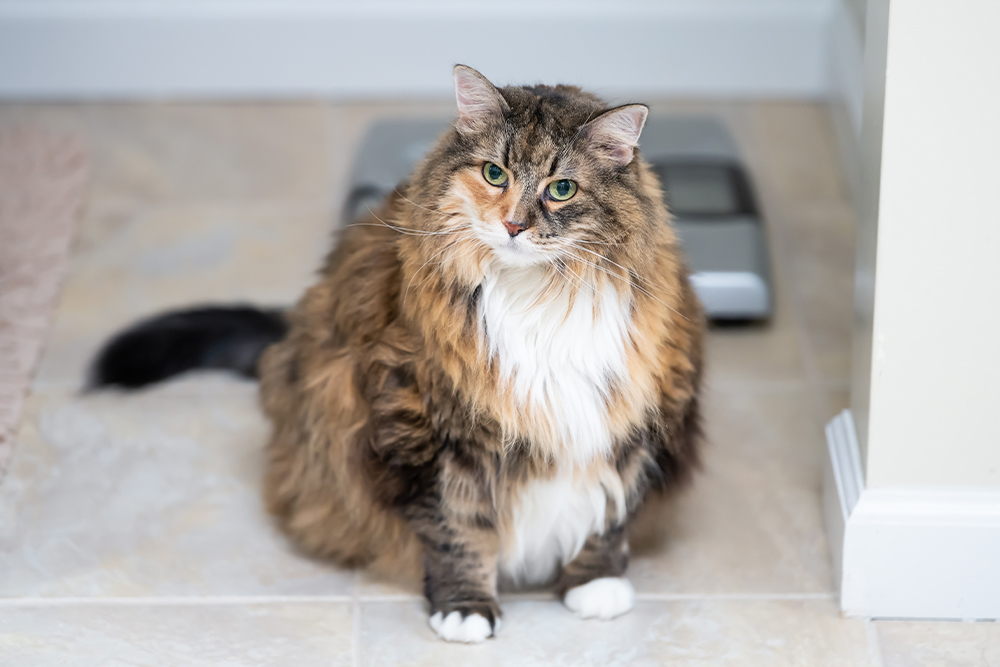Diabetes mellitus is one of the most common endocrine disorders in cats, and without proper management, it can lead to serious complications—including nerve damage, diabetic ketoacidosis, and organ failure. Recognizing early symptoms, understanding treatment options, and committing to long-term care are key to supporting a diabetic cat’s health and quality of life.
At Southern Arizona Veterinary Specialty & Emergency Center, we’re committed to helping pet owners navigate every stage of this journey with expert care and personalized support.
Understanding Feline Diabetes
What Is Diabetes Mellitus?
Feline diabetes occurs when the body cannot produce or properly use insulin, a hormone that regulates blood sugar. This leads to persistent hyperglycemia (high blood glucose levels). The condition is most often diagnosed in middle-aged to senior cats but can develop at any age.
Types of Feline Diabetes
- Type I (Insulin-Dependent): The pancreas produces little or no insulin.
- Type II (Non-Insulin Dependent): The body produces insulin but doesn’t use it effectively. This is the most common type in cats.
Common Risk Factors
- Obesity: Significantly increases the risk of insulin resistance.
- Age: Older cats are more likely to develop diabetes.
- Diet: High-carbohydrate diets may contribute to the condition.
- Steroid Use: Prolonged use of corticosteroids can interfere with insulin function.
For a deeper dive into causes and risk mitigation, explore the AAHA Diabetes Guide.
Recognizing the Signs
Early Indicators
Watch for these common symptoms of early-stage diabetes:
- Increased thirst and urination
- Unexplained weight loss despite normal or increased appetite
- Lethargy or decreased activity
- A greasy or poorly groomed coat
More Concerning Signs
If diabetes progresses without treatment, symptoms may include:
- Weakness in the hind legs (diabetic neuropathy)
- Vomiting or dehydration
- Loss of appetite
- Increased risk of infections (e.g., urinary tract infections)
Learn more about managing health concerns in aging pets through the AVMA’s Senior Pet Care Resource.
Diagnosing Diabetes in Cats
What to Expect at the Vet
Your veterinarian may recommend the following tests:
- Bloodwork: To detect elevated blood glucose levels.
- Urinalysis: To check for glucose and ketones in the urine.
- Fructosamine Test: Reflects average glucose levels over several weeks.
If you notice signs of diabetes in your cat, don’t delay. Timely diagnosis is critical to preventing complications. Learn more about feline blood glucose testing at Morris Animal Foundation.
Managing Diabetes: Daily Care & Long-Term Health
Insulin Therapy
Most diabetic cats require daily insulin injections. Common options include:
- Glargine (Lantus)
- PZI (Protamine Zinc Insulin)
- Detemir
Consistent timing and dosage are essential. Your vet may also recommend tracking blood glucose curves to optimize treatment. Review the AAHA Blood Glucose Curve Guidelines for best practices.
Nutrition & Diet
- A low-carb, high-protein diet can help stabilize glucose levels.
- Wet food is typically recommended over dry kibble.
- Feed at regular intervals and practice portion control to avoid spikes.
Weight & Activity
- Support gentle daily movement to reduce the risk of obesity.
- Avoid sudden weight loss, which can complicate glucose management.
Diabetic Emergencies: When to Act Fast
Hypoglycemia (Low Blood Sugar)
This can happen if insulin is given without food or if the dosage is too high.
Signs of Hypoglycemia:
- Disorientation or weakness
- Tremors, twitching, or seizures
- Loss of coordination or collapse
Immediate Steps:
- Rub corn syrup or honey on your cat’s gums (if alert).
- Offer a small meal.
- Seek emergency veterinary care right away.
For additional emergency first aid tips, visit the Red Cross Pet First Aid Guide.
Diabetic Ketoacidosis (DKA)
A severe and life-threatening condition caused by prolonged hyperglycemia.
DKA Symptoms:
- Vomiting or diarrhea
- Extreme fatigue
- Labored breathing
- Fruity-smelling breath
If you suspect DKA, contact your vet immediately. For an in-depth overview, visit Today’s Veterinary Nurse.
Find more emergency care information from the AAHA Pet Emergency Guide.
Long-Term Monitoring & Support
At-Home Glucose Monitoring
- Use a pet-specific glucose meter.
- Track patterns and report changes in appetite, weight, or energy levels.
Ongoing Veterinary Care
- Regular exams and lab work help fine-tune insulin therapy.
- Monitor for complications like UTIs, dental disease, or kidney issues.
Diabetic Remission Is Possible
Some cats go into remission—especially when diabetes is caught early and managed with insulin and diet. Maintaining a healthy weight and consistent care can improve remission chances. Review the AAHA Diabetes Management Guidelines for more information.
With early detection, consistent treatment, and ongoing support, many cats with diabetes live long, healthy lives. If your cat is showing signs of diabetes—or if you need help managing an existing diagnosis—schedule a consultation with our team today.
At Southern Arizona Veterinary Specialty & Emergency Center, we’re here to help every step of the way. Visit our website to learn more or book an appointment.









Leave A Comment